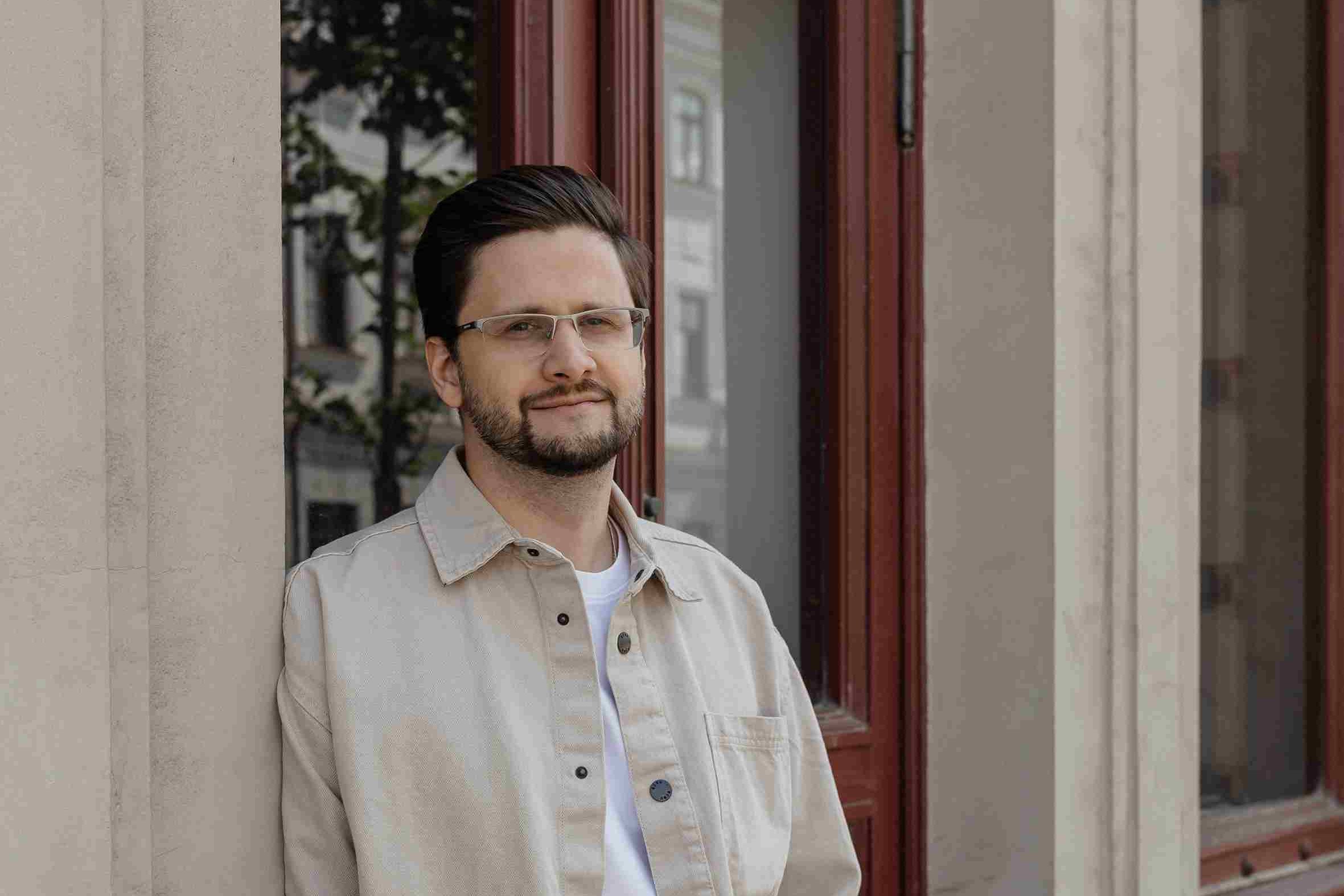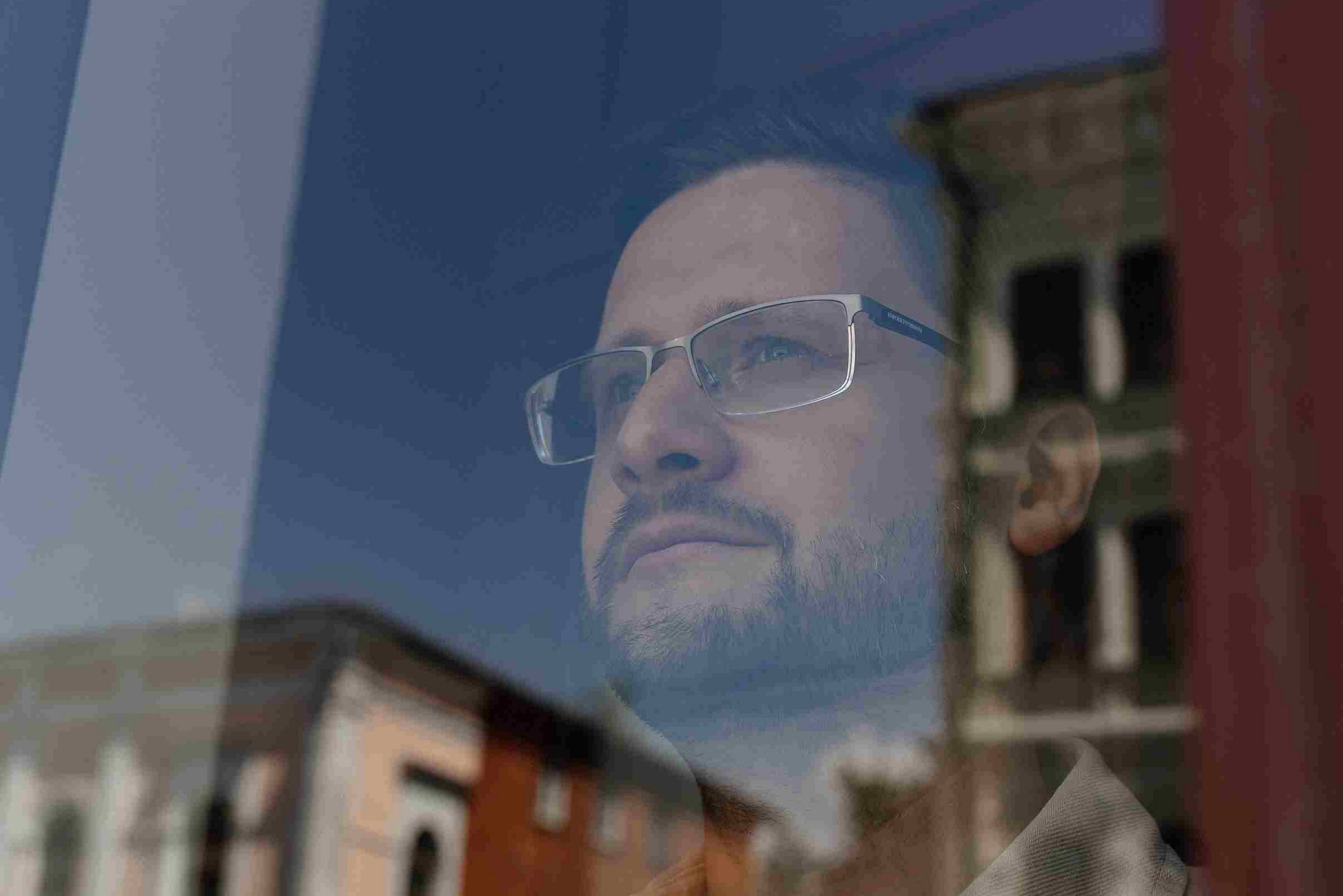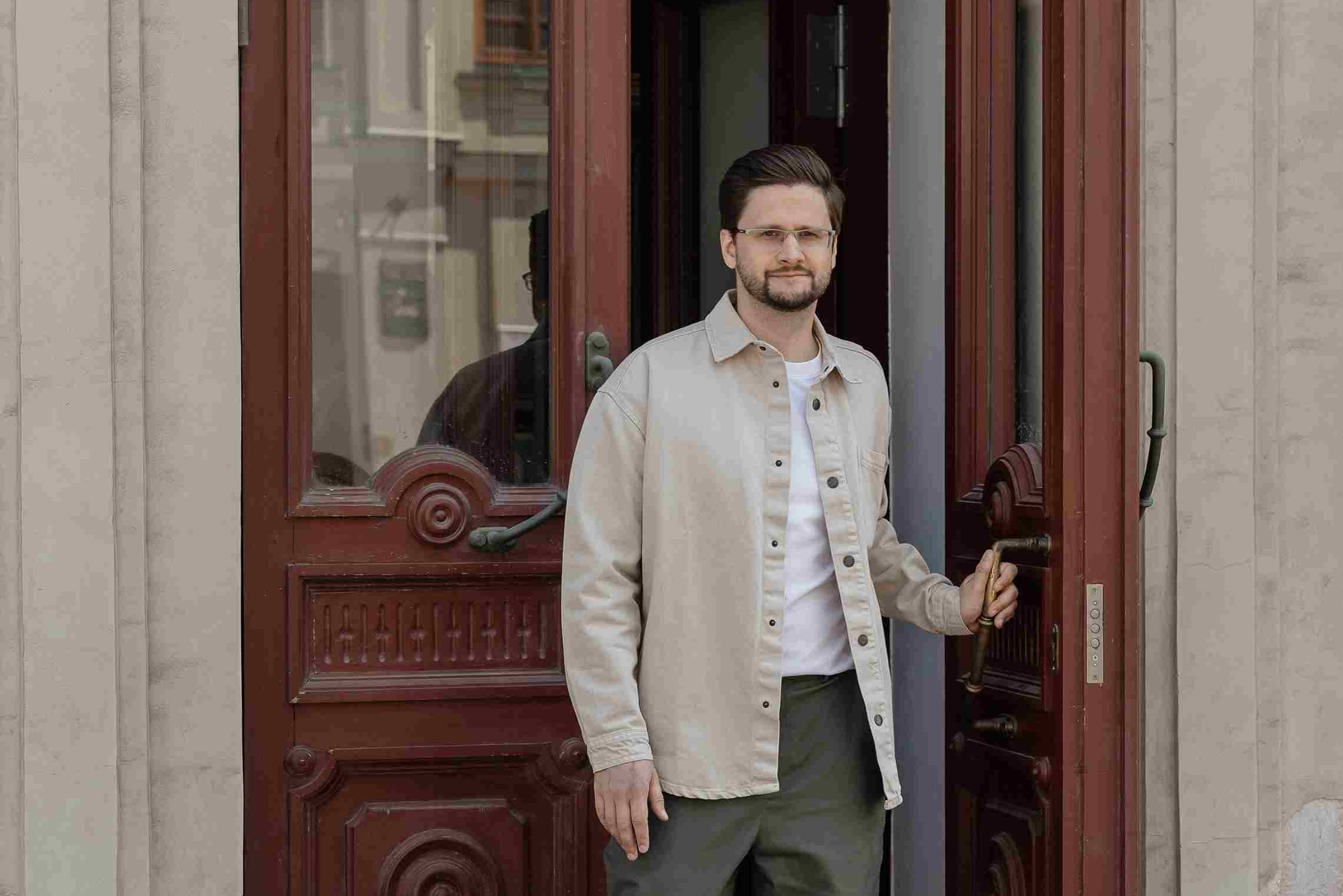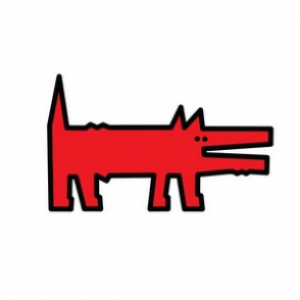This year, “AIST-ST” to have been created by Maksim Ivanushkin, Head of Samara University’s Cyber-physical Factory of Small-sized Spacecrafts, will be launched into space from the Vostochny Сosmodrome. The 16-unit CubeSat – don’t ask! – will become the first Russian small-sized spacecraft equipped with the radar device, and will transmit from orbit accurate data for the purpose of monitoring the state of forests or plotting routes for icebreakers in the Arctic and the Antarctic.

“What brought you to the Cyber-physical Factory of Small-sized Spacecrafts? Why did you choose outer space rather than IT, for example?”
“Indeed, I considered the idea of being engaged in IT, but I clearly remember thinking in the eleventh grade that I didn’t want to spend my whole life at a computer. Today, at work, – sitting at the computer, of course! – I smile, remembering these reflections. My story with outer space is likely to begin in my childhood: Mom taught physics and astronomy at school, so we talked about stars. Besides, I’ve never been particularly interested in aircrafts, helicopters scare me, and I haven’t considered engines either, and I don’t even remember why. In general, when I was choosing my future specialty, I liked how it sounded, “Spacecrafts and Space Tugs”. This seemed to me to sound epic, so I decided to enroll in the aerospace university. I remember when we went to Baikonur for the traineeship in about our fifth year, and I was impressed by the sad story of “Energia – Buran”: I looked at the launch tables, saw this large-scale and gigantic structure and the incredibly complex engineering facility, and it was very sad that the whole story had stopped being used, and then it was just living out its life. I was so impressed that I decided to do my best for avoiding such situations in the future. After receiving the diploma, the most direct way to outer space and to the work in my specialty was through the TSSKB “Progress”. And I was a little bit unlucky there: I was assigned in the department that dealt with rockets, not spacecrafts, which meant a huge amount of routine work: the documentation had been kept there literally since the 60s! I wanted more freedom and creativity, so I accepted with enthusiasm the offer to work at the Spacecraft Mission Control Centre, which came from the University, and left the design bureau. To work at the University, I had to continue my education, so I began gradually entering science. And the more I immersed myself in the specificity of space, the more interesting it was. That’s why, somehow, like this, I was perhaps led into outer space”.
“You’ve mentioned documentation from the 60s, so I can’t help but ask: are there any new discoveries and solutions since the time when Gagarin said his “Let’s go”?”
“Certainly! Take, for example, Elon Musk, who proved that reusable fly-back rockets are economically efficient, so our developers currently consider the possibility of following this path. Modern launch vehicles, including super heavy-lift ones, are also being developed, with their electronic equipment to be updated, so the progress in the field of rocket science is being made. The dynamics of spacecraft evolution is more evident: the electronics development has made it possible to simultaneously reduce the size of spacecrafts and increase the scale and the range of tasks to be solved. At present, this resulted in shifting everything towards miniaturization and the creation of groupings of spacecrafts that increase efficiency and frequency of observations”.

“I’d like to find it out for my friend: when we use the term “small-sized spacecraft”, we mean a satellite, right?”
“At large, any artificial object in the Earth’s orbit can be called a satellite. In our case, it is about automatic spacecrafts, the purpose of which may be completely different, but in most cases they are used for exploring the surface and the terrain of the Earth from outer space”.
“And what tasks does your “AIST” solve?”
“It’s hard to call it mine: “AIST” of the first generation – two spacecrafts! – was launched into space in 2013. I did not participate in its development because I was too little then. In those years, developing a small-sized spacecraft was the first experience for both the University and the RCC “Progress”, which acted as a partner in this project. The main task of the first “AIST” was researching the magnetic field of the Earth and outer space. The next “AIST”, or rather “AIST-2D”, was launched in 2016. It was a higher-end spacecraft than one that probed the Earth in the optical range. And the task of the new “AIST” is updating information on the territory of Russia and the whole world: it will need to shoot about 90 million km2 with a resolution of about 1.3 m per pixel, which allows distinguishing a large car in a parking lot”.
“What are you and your team doing today?”
“At present, we have “AIST-ST” at its final stage of refinement: according to the small-sized spacecraft classification, which depends on the mass, it belongs to the CubeSat class and consists of 16 cubic units with the edge of 10 cm. The main payload of this spacecraft is a radar, which is not prevented from operating by cloud cover, and, unlike optical locators, it can operate at night. Within the framework of the Advanced Aerospace Engineering School, which was established at our University, we are developing the approach to the serial robotic production of small-sized spacecrafts, with people’s involvement in the production process to be minimized. The payload for these spacecrafts has been developed by our colleagues from Samara University: this will be the third hyperspectrometer to go into space”.
“And what is the most difficult thing in developing a small-sized spacecraft?”
“Perhaps the most difficult thing is to take into account all the points to arise during the launch and the operation, as well as choose the equipment to ensure maximum functionality. The work with related parties in attempts not to disrupt deadlines may be mentioned, as well. Well, the factor of outer space itself also needs to be considered: in fact, after launching the spacecraft, there is no way to radically change anything in it. Except for updating its software. Therefore, it is necessary to carefully consider the system reliability and create duplicate circuits to accommodate some element failure”.
“Do you have a job-related dream?”
“To my mind, I do. I dream of developing a distributed ground structure, which will make it possible for us to have more time for communicating with the spacecrafts in orbit. I also want to develop a spacecraft that will be able to operate in an ultra-low orbit, where its lifetime is strongly influenced by the atmosphere: due to its closer position to the Earth, such a spacecraft could transmit better images. Creating a spacecraft that could stay there for at least a few months is an interesting engineering task, and we are currently searching for its solution. And when we manage to solve it, I will dream even more of developing ground infrastructure, because the lower the spacecraft is, the smaller its radio visibility zone, which means that the communication sessions are shorter. The ratio is approximately as follows: the spacecraft in an orbit of 500 km is “available” for ten to twelve minutes, and the “talk” with the spacecraft in an orbit of 300 km will take from five to seven minutes. Accordingly, it is quite problematic to control a spacecraft from one station and receive information from it, but our country’s territory scale makes it possible to increase the number of communication sessions”.
“What skills and abilities should a modern scientist have? Is the new wave different from the old school?”
“I admire the old school: they were pioneers, did many things for the first time, and, in my opinion, they were more steely guys than we are now, even though this doesn’t do us any credit. Modern scientists differ from their colleagues from the past in that they work in the era of open science and global communication between scientists from various countries. This is probably the main difference between generations. Today, any student can do calculations, which used to take many weeks, in a couple of minutes”.
“As someone who is inside the space industry, can you tell us how much the stellar world has been studied, and whether we can expect any new amazing discoveries?”
“This question is likely to relate more to fundamental science, since the main discoveries are associated with the history of the development of the Universe itself, our galaxy and neighboring galaxies. By using space telescopes, colleagues observe changes in the universe and build theories about its development. In terms of our applied science, it is difficult to say how many new discoveries can be made with current tools. But if we can create some kind of observation tool for the Earth, we will be able to delve deeper into the formation of the Solar System itself and our planet”.

“Please tell us, why there is so much talk about the number of rocket launches? What does it mean on a national scale?”
“Each launch is an opportunity for gaining new knowledge and new products. In modern cosmonautics, one of the main trends is multi-satellite groupings. Whoever has more spacecrafts in orbit gets more information. And not only more, but also faster and more often. Besides, they allow reaching new engineering solutions, so the relation is simple: the more launches, the more satellites in orbit, and the country’s security and economic benefits depend on the number of its satellites in outer space”.
“Are there times when you regret about your choice of a scientific career?”
“One can’t help it! Especially when you have to spend many hours poring over some document. And then you look out the window or go on social media, and there everyone is enjoying beaches, the weather and nature. At such times, this causes good envy”.
“A question from the “if” category: who would you become if you hadn’t connected your life with outer space?”
“Remembering some points of bifurcation, it seems to me that I would still have stayed in the space industry, no matter what the circumstances. Perhaps, I would have moved closer to manufacturing or developing products for the industry companies, perhaps, I would have devoted more time to creativity and science. But right now, I somehow don’t see myself leaving outer space”.
“What is a Russian scientist’s typical day?”
“In my case, everything depends on the spacecraft in orbit: my day begins with our receiving the first communication session, we quickly process the data gained and see what happened. The first session is usually conducted remotely, and it is an hour and a half before the next session, which takes me to get to our MCC (Mission Control Centre). Then, depending on the semester, I go either to teach or to the office, to solve project tasks. And in the evening we have communication sessions again!”
“What do you want to teach your students?”
“I want to show them the practical application of what they are learning, because when I was a student, I often wondered why I needed it. That’s why all the knowledge I give them, I try to present through the prism of where it can be applied. And there is one more nuance. One of the courses I teach is Introduction to Rocket and Space Engineering for first-year students. Knowing their future program, I understand that they will no longer encounter space themes until the fourth year, so I emphasize that they need to remember what they entered the University for! I try to cover rocket and space engineering in general – flight dynamics, a little bit of aerodynamics, a little bit of durability and spacecrafts. And I point out where these aerodynamics, flight dynamics, and mathematics can come in handy in the future. It looks like a quick, cursory overview, after which, having got profound knowledge, they will be able to delve into our specificity. And, of course, we always try to provide students with real data from spacecrafts and involve them in controlling ones so that they can touch, feel, in general, experience this history straight from outer space. Simply put, I try to teach theory through practice!”
Source: sobaka.ru
 RU
RU  EN
EN  CN
CN  ES
ES 